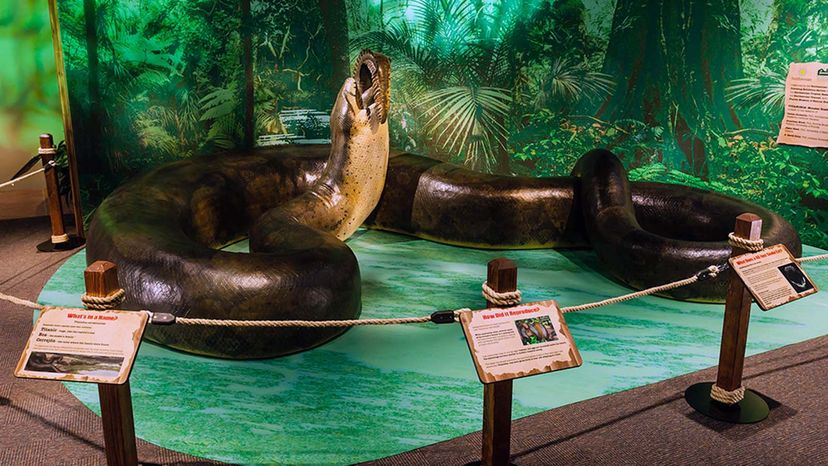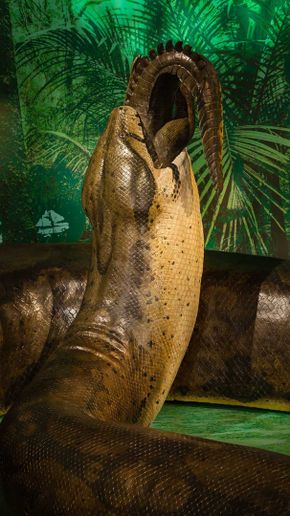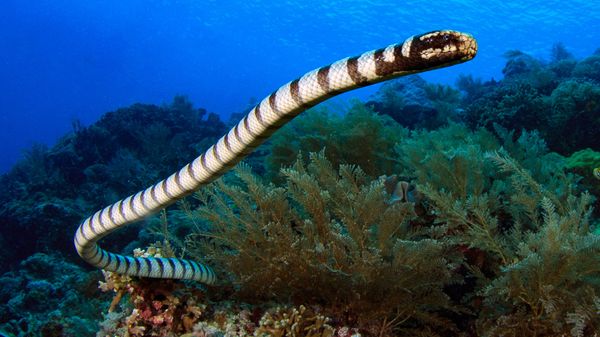Fossils from 28 of these giant snakes have been recovered at Cerrejón. Unfortunately, we've yet to locate a complete skeleton.
Instead, the scientific community has had to make do with an assortment of ribs and vertebrae — plus some skull material. (Snake skulls are rarely found in the fossil record; due to their delicate structure, they often don't survive the processes of decomposition, scavenging and fossilization.)
Yet, even these finds speak volumes. By comparing the fossils to the bones of living snakes, we can get a pretty good idea of what Titanoboa looked like. For example, subtle clues in the vertebrae indicate that the animal was a boid.
It makes sense geographically: Boids are a family of snakes usually found in the Americas. Being nonvenomous, they tend to kill by constriction.
Of all the boids alive today, the one most closely related to Titanoboa might be the red-tailed boa, a denizen of Central and South America that can grow up to 13.2 feet (4 meters) long. Movie buffs who've seen "A Clockwork Orange" will probably recognize this reptile from its appearance in Alex's drawer.
Titanoboa also invites comparisons to a much larger boid: the green anaconda. Capable of weighing 440 pounds (200 kilograms), this South American serpent is the heaviest snake in the world. And it's plenty long, too: The biggest reliably measured specimen was 27.2 feet (8.3 meters) in length.
Over in Asia, the unrelated reticulated python — or "retic" — can exceed this figure, stretching up to 28 feet (8.5 meters) long in some cases. But the retic has a sleeker frame; experts don't think it can rival the anaconda's maximum weight.
Regardless, neither serpent could hold a candle to the sheer size of Titanoboa. Scientists estimate that the Paleocene predator stretched 42 to 47 feet (12.8 to 14.3 meters) in total body length. Theoretically, it might've tipped the scales at 1.25 tons (1.13 metric tons).
Similar in length to the Tyrannosaurus rex, Titanoboa cerrejonensis is the biggest snake in the world known to science, living or extinct.




